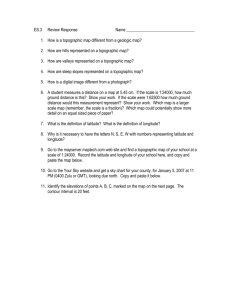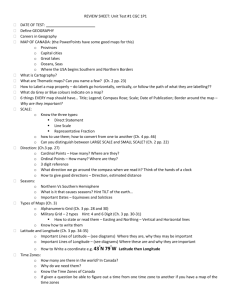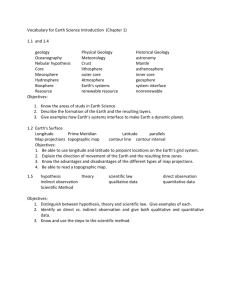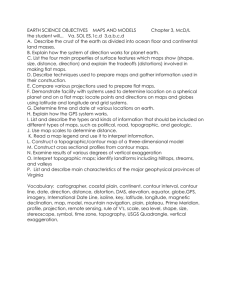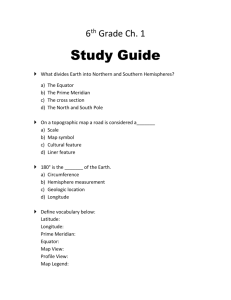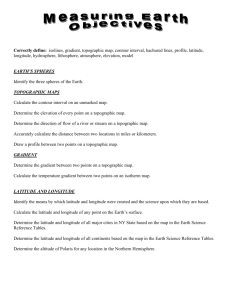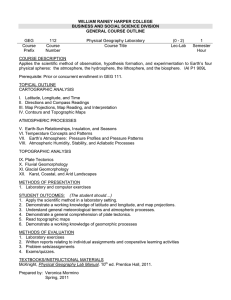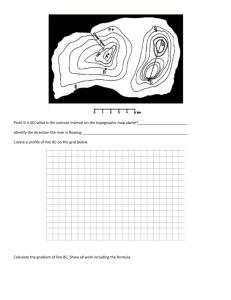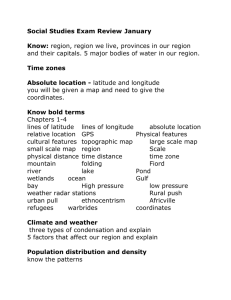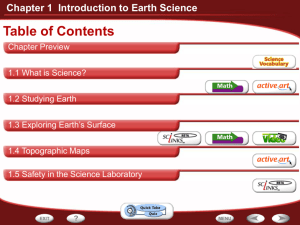Lesson One – Maps
advertisement
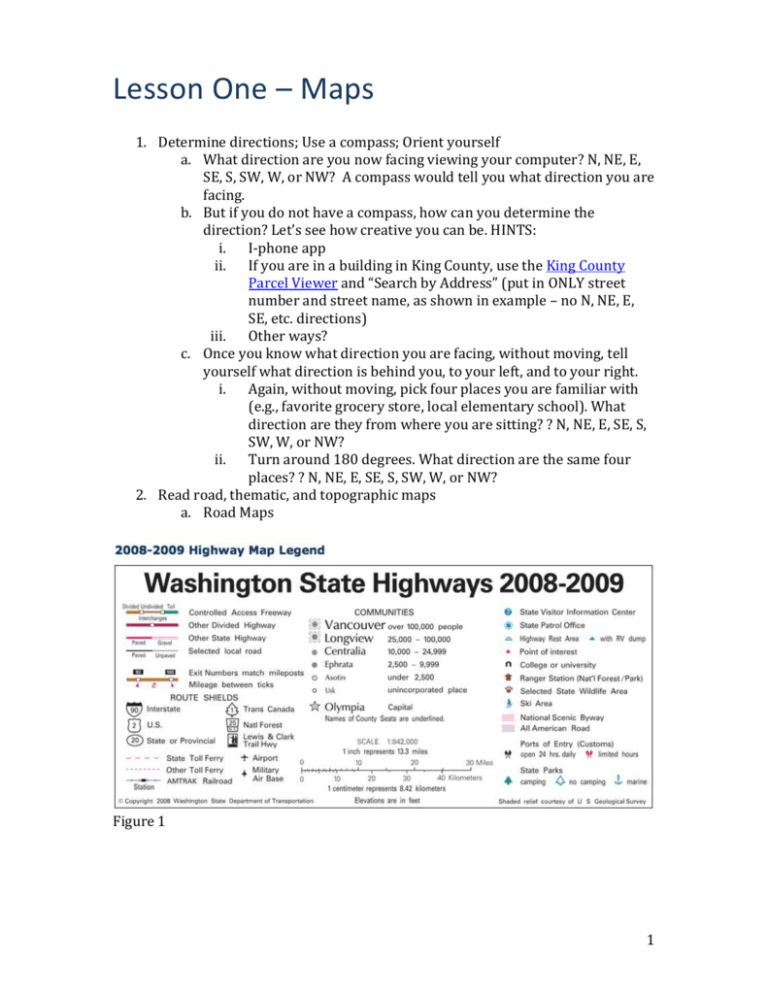
Lesson One – Maps 1. Determine directions; Use a compass; Orient yourself a. What direction are you now facing viewing your computer? N, NE, E, SE, S, SW, W, or NW? A compass would tell you what direction you are facing. b. But if you do not have a compass, how can you determine the direction? Let’s see how creative you can be. HINTS: i. I-phone app ii. If you are in a building in King County, use the King County Parcel Viewer and “Search by Address” (put in ONLY street number and street name, as shown in example – no N, NE, E, SE, etc. directions) iii. Other ways? c. Once you know what direction you are facing, without moving, tell yourself what direction is behind you, to your left, and to your right. i. Again, without moving, pick four places you are familiar with (e.g., favorite grocery store, local elementary school). What direction are they from where you are sitting? ? N, NE, E, SE, S, SW, W, or NW? ii. Turn around 180 degrees. What direction are the same four places? ? N, NE, E, SE, S, SW, W, or NW? 2. Read road, thematic, and topographic maps a. Road Maps Figure 1 1 Figure 2 i. ii. Locate Highway 16 between Tacoma and Port Orchard. What is the total distance between Interstate 5 where Highway 16 ends SW of Port Orchard? 2 b. Thematic Maps: shaded relief i. Click ONCE on downtown Seattle on the Washington State Shaded Relief Map with Land Cover, and STOP. This shaded relief map of western Washington clearly shows the locations of the Olympic Mountains and the Cascade Mountain Range. ii. Again, locate downtown Seattle on this map, then click ONCE and STOP. iii. Keep clicking (or double-clicking) on downtown Seattle until you cannot zoom in anymore. Experiment with “+” and “-“ zooms, Road, Aerial, Bird’s eye and Labels. c. Topographic Maps i. This is a shaded-relief map of the area surrounding Mt. Rainier. Figure 3 3 Figure 4 ii. An enlargement of this shaded-relief map. iii. This is a topographic map of Mt. Rainier. Figure 5 4 iv. Figure 6 An enlargement of Mt. Rainier’s topographic map. a. Note on this topographic map that there is an interval difference of 200 ft. between each dark line. These “closed” circles are called contour lines and the elevation above sea level is the same anywhere along that line, no matter how much it wiggles or varies. What then is the interval difference between each “lighter” line? b. Why would it be correct to say that the highest point near “C” of Cascade Range is higher than 14,400 feet? 3. Locate latitude/longitude points on maps Using the interactive Department of Ecology, State of Washington Latitude/Longitude Maps double-click on the “WRIA” number of your current location in Washington State. If you are out of Washington State, select WRIA 8. a. Find your current location (or find the location of Safeco Field). b. What is the latitude/longitude of your location (or the location of Safeco Field) in four-digits, i.e., XX.XX and XX.XX. Include the latitude position (N or S) and the longitude position (E or W). 4. Making Mental Maps These are the ultimate maps because these maps you carry with you in your memory. They are what you “see” when you imagine a line between two or more points, an area or an intersection. Quantity of information, accuracy of detail, and scale are the important features of mental maps. 5 a. Let’s start with a really simple example. Place your hand palms down on a flat surface and spread your fingers. Look straight down at your hand and note the largest and most obvious features: right-hand or left-hand, four fingers and one thumb, finger nails, knuckles (how many?). Now, close your eyes and picture your hand and mental go through and recall each of these obvious features. b. Now open your eyes, and let’s look at details: lines, scars, blemishes, cuts, cuticles, length of nails, hairs, and color(s). Close your eyes and recall each of these features. c. One time will not be enough to give you a clear and accurate mental image of your hand. Practice this several time during the day. d. When you’re ready to advance to more sophistication, let’s practice creating a mental map of Figure 6, above. Go through the same procedure: start with large and obvious features: crater (bottom right corner), number of “dark” lines, key. Close eyes and picture these features. e. Now open your eyes, and let’s look at details: names, elevations, contour curves, and shading. Obviously, this is somewhat more difficult and more abstract. Mentally picture these detailed features, repeating often to sharpen your memory of details. f. The last and final test: on a blank piece of paper, with Figure 6 out of sight, draw Figure 6 with as much detail as you can recall. Check accuracy of scale, position-placement, name recall, contour details, and all other details. 6
